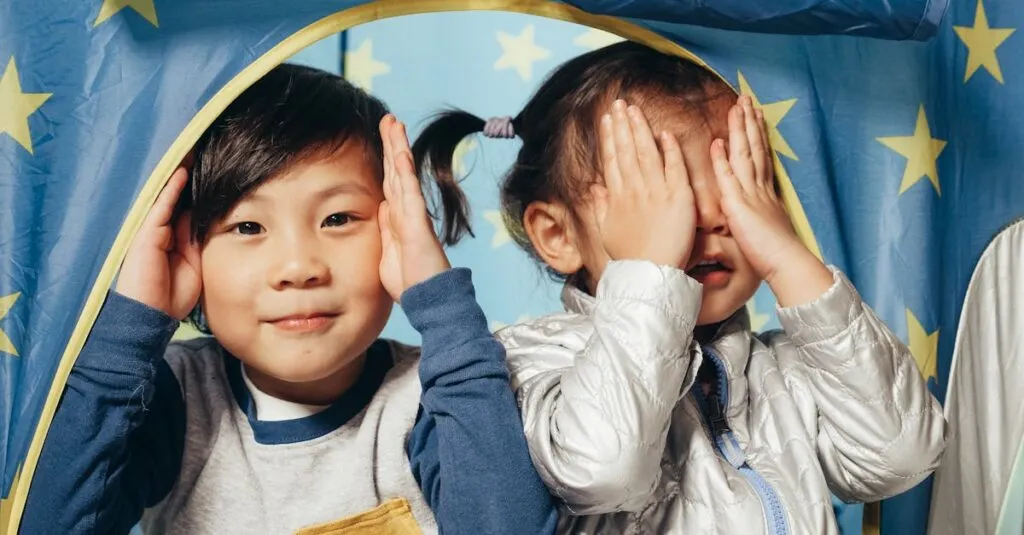Finding Common Ground in Genesis
Imagine the story of creation in Genesis as a vibrant tale of diversity. God made the world in seven days, each day adding a new masterpiece. This narrative reminds us of the beauty and necessity of variety. Just like the vivid colors in a rainbow, our differences add richness to life.
Parents can use this story to highlight how diversity is God’s design. Encourage kids to appreciate differences, like enjoying various ice cream flavors at once! By linking diversity to familiar things, kids learn to see it as exciting and normal.
Emphasize conversations about acceptance at the dinner table and ask questions like, ‘What makes our family unique?’ Such chats can nurture open-mindedness.

Good Samaritan: A Lesson in Kindness
Picture the story of the Good Samaritan – it’s like a superhero tale about kindness and acceptance. Crossing cultural lines, a Samaritan helps a distressed traveler, proving that kindness has no boundaries.
Share this story with a blend of humor: ‘Imagine if Batman lived in Bible times, he’d be the Good Samaritan!’ Parents can teach children that helping someone doesn’t require a cape, just compassion.

You can act this out with toys to illustrate kindness and acceptance, creating a playful yet profound learning experience. Help kids understand that being nice doesn’t depend on who someone else is, but rather, who they choose to be.
Joseph’s Journey: Embracing Differences
Joseph’s journey from favoritism and betrayal to forgiveness is a dramatic lesson in acceptance. With his coat of many colors, he faced many challenges. Use Joseph’s story to show kids the power of embracing one’s unique talents and forgiving others.
Imagine if Joseph had Twitter – his hashtag might be #StayPositive!
Lessons from Joseph’s Story
- Discuss how jealousy can harm relationships.
- Emphasize the importance of accepting each person’s gifts.
Encouraging Special Talents
Encourage children to share what makes them special and celebrate peers’ achievements. This can foster an environment of support rather than competition at home and in school.
Ruth and Naomi: Acceptance Beyond Borders
Ruth and Naomi’s story explores acceptance across cultural divides. In a world where differences could separate, Ruth’s loyalty and love transcended barriers.
Relate this to kids with this anecdote: ‘If Naomi was cookie dough, Ruth was the sprinkles!’
Highlight the importance of standing by friends, even if they come from different backgrounds. Create opportunities where your children can interact with diverse groups.
This story encourages inclusivity and teaches children to stand up for relationships that matter, welcoming others into their circle, regardless of where they’re from.

The Apostles: Celebrating Diversity
The apostles, a ragtag band of diverse backgrounds, displayed unity in faith. Peter, the fisherman, and Matthew, the tax collector, worked harmoniously, exemplifying teamwork.
Discuss with children how group projects in school mirror the apostles’ unity. This is akin to forming the Avengers team – everyone brings different skills!
Encourage kids to value classmates with different skills, fostering a spirit of collaboration. Use this cheerful analogy to make diversity influential, demonstrating how disparate individuals can create something magnificent together.

- Teamwork: The collaboration between Peter and Matthew.
- Diversity: Valuing different skills in class projects.
- Understanding: Making connections to popular culture like the Avengers.
Reflecting Love with Parenting
Parenting offers a canvas to teach love as the universal language. Reflect on the parable of the Prodigal Son and embrace forgiveness. Connect this with an anecdote about lost toys or mishaps, such as:
‘Remember that time you lost Dad’s favorite cap, and yet, he forgave you?’
Use such personal stories to show real-world forgiveness. Encourage open dialogues with children about their emotions and challenges. Invite discussions on times they felt different:
- Did someone’s kindness help?
- How did that make you feel?
This encourages empathy, helping children realize that love binds all these lessons about diversity and acceptance.

